India, a country hailed as one of the most beautiful destinations on the planet, is renowned for its vibrant culture and captivating heritage. Its majestic monuments, exemplified by the iconic Taj Mahal, stand tall as testaments to India's profound and extensive history. These architectural marvels, crafted with impeccable precision, represent the enduring legacy of the Rajputana, Dravidian, and Mughal emperors who once ruled these lands.
Each Indian monument stands as a reverberating echo of the glory of its past rulers and the unparalleled brilliance of the ancient Indian artisans.
India Gate, Delhi
The India Gate is a prominent monument that forms part of the work carried out by the Imperial War Graves Commission (IWGC). Established in December 1918 during British rule, the commission undertook the responsibility of constructing war graves and memorials dedicated to the brave soldiers who lost their lives in the First World War.

(Image Credit: India CSR)
The foundation stone of this majestic gate, initially known as the All India War Memorial, was laid on the 10th of February 1921, precisely at 16:30. The honour of performing this significant act was given to the visiting Duke of Connaught. It was done in the presence of esteemed attendees comprising officers and soldiers of the British Indian Army, Imperial Service Troops, the commander-in-chief, and Lord Chelmsford, the viceroy of India.
The India Gate stands tall and proud, reaching a height of 42 meters (138 ft). Its foundation rests upon a solid base crafted from the vibrant red Bharatpur stone, gradually ascending in stages towards a magnificent moulding.
Amar Jawan Jyoti, Delhi
Amar Jawan Jyoti is an Indian memorial that was conceptualized and built after the Indo-Pakistani War of 1971. It was inaugurated on January 26, 1972, and served as the national war memorial in India until February 2019. At that time, a new National War Memorial with its flame was inaugurated and lit. On January 21, 2022, the older flame at Amar Jawan Jyoti was merged with the newer one at the National War Memorial.
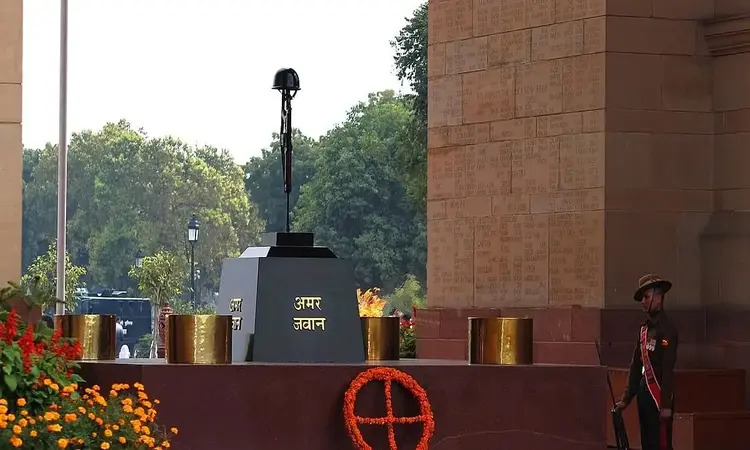
(Image Credit: Current Affairs - Adda247)
The Amar Jawan Jyoti at India Gate consists of a 15 square feet base with a height of 4 feet 3 inches. On top of the base, there is a black marble pedestal, a cenotaph measuring 3 feet 2 inches in height. The words "Amar Jawan" (Immortal Soldier) are inscribed in gold in Hindi on all four sides of the cenotaph, with a reversed rifle and a war helmet on top. The pedestal is surrounded by four urns and the flame was lit during observances.
A new flame is installed at the National War Memorial to honour all known martyrs of the Indian Armed Forces since India's independence. It was completed in February 2019 and inaugurated by Prime Minister Narendra Modi on February 25. The flame at the centre of India Gate was merged with this new flame by the Chief of Integrated Defence Staff, Air Marshal Balabhadhra Radha Krishna.
Getting Here
- 12951 | NDLS TEJAS RAJ - Mumbai (MMCT) To Delhi (NDLS)
- 12313 | RAJDHANI EXPRES - Kolkata (SDAH) To Delhi (NDLS)
- 12615 | GRAND TRUNK EXP - Chennai (MAS) To Delhi (NDLS)
Jallianwala Bagh, Amritsar
Jallianwala Bagh, located near the Golden Temple complex in Amritsar, Punjab, India, holds significant historical importance as a memorial and garden. It stands as a testament to the tragic event known as the Jallianwala Bagh Massacre, which unfolded on the auspicious day of Baisakhi, precisely on the 13th of April in the year 1919. This solemn 7-acre (28,000 m2) site encompasses not only a memorial ground but also houses a museum, gallery, and various commemorative structures.
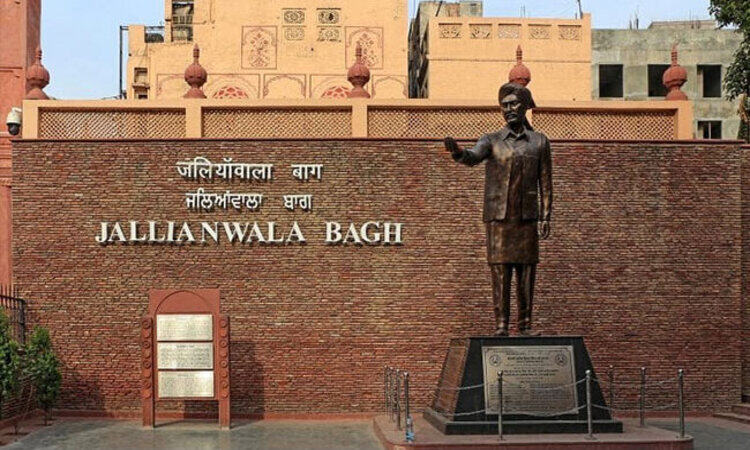
(Image Credit: NDTV)
In recent years, between 2019 and 2021, extensive renovations were undertaken to restore and enhance its historical significance, ensuring that future generations can learn about and remember the tragic events that occurred there.
This picturesque garden and memorial serve as a poignant reminder of the sacrifices made by those who were wounded or lost their lives during the Jallianwala Bagh Massacre. The blend of serenity and solemnity that permeates this site creates a thought-provoking experience for visitors, allowing them to reflect on the past while embracing the present.
Getting Here
- 12013 | ASR SHTBDI EXP - Delhi (NDLS) To Amritsar (ASR)
- 12903 | GOLDEN TEMPLE - Mumbai (MMCT) To Amritsar (ASR)
- 12317 | AKAL TAKHT EXP - Kolkata (KOAA) To Amritsar (ASR)
Victoria Memorial, Kolkata
Nestled on the expansive Maidan in Central Kolkata, the magnificent Victoria Memorial commands attention with its grandeur and splendour. This colossal marble structure, gracing the Queen's Way as its entrance, was painstakingly erected between 1906 and 1921 under the patronage of the British government.

(Image Credit: Planet of Hotels)
Its solemn purpose is to commemorate the remarkable legacy of Queen Victoria, who reigned as the Empress of India from 1876 to 1901. As the largest monument dedicated to a monarch anywhere on the globe, it proudly occupies an awe-inspiring 64 acres of meticulously manicured gardens, now entrusted to the capable stewardship of the Ministry of Culture.
Boasting architectural elements that distinctly reflect the British colonial era, the Victoria Memorial has effortlessly transformed itself into an iconic landmark and a beloved destination. Moreover, the memorial is cherished by countless visitors in the vibrant city of Kolkata.
Getting Here
- 12260 | SDAH DURONTO - Delhi (NDLS) To Kolkata (SDAH)
- 12151 | LTT SHM SF EXP - Mumbai (LTT) To Kolkata (SHM)
- 12842 | COROMANDEL EXP - Chennai (MAS) To Kolkata (SHM)
Sabarmati Ashram, Ahmedabad
This serene abode lies adjacent to Ashram Road in Ahmedabad, gracefully nestled along the banks of the Sabarmati River. Throughout his life, Mahatma Gandhi, the esteemed leader, resided in various places, including Sabarmati (Gujarat) and Sevagram (Wardha, Maharashtra), whenever he was not traversing the length and breadth of India or confined within prison walls.
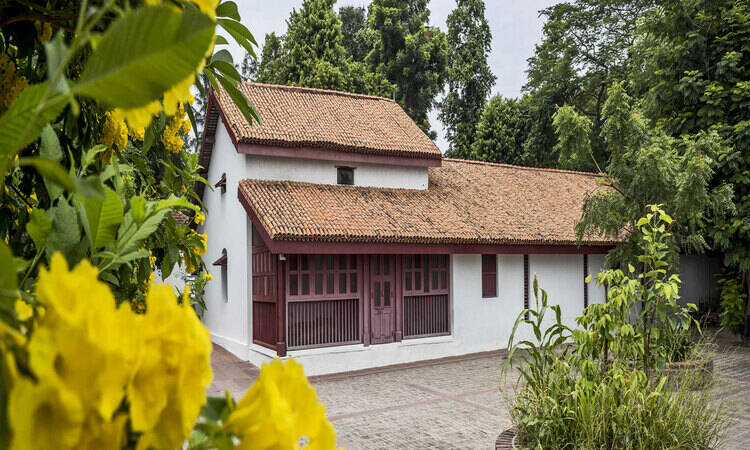
(Image Credit: Gujarat Tourism)
Accompanied by his devoted wife, Kasturba Gandhi, and his dedicated followers, among whom was Vinoba Bhave, Gandhi spent a total of twelve years residing in Sabarmati or Wardha. The Ashram's daily routine encompassed the recitation of the Bhagavad Gita, an integral part of their spiritual practice.
It was from this hallowed place that Gandhi embarked upon the historic Dandi March, which also became renowned as the Salt Satyagraha, on the momentous day of 12th March 1930. Recognizing its historical significance, the Indian government has duly designated the ashram as a national monument, paying homage to the enduring spirit of nonviolent resistance and selfless dedication symbolised by Mahatma Gandhi.
Getting Here
- 19032 | YOGA EXPRESS - Delhi (DLI) To Ahmedabad (ADI)
- 20901 | VANDE BHARAT EXP - Mumbai (MMCT) To Ahmedabad (ADI)
- 19414 | KOAA ADI EXP - Kolkata (KOAA) To Ahmedabad (ADI)
Gateway Of India, Mumbai
The Gateway of India is an arch monument situated in Mumbai (formerly Bombay), India. It was constructed in December 1911 to commemorate the landing of King-Emperor George V.
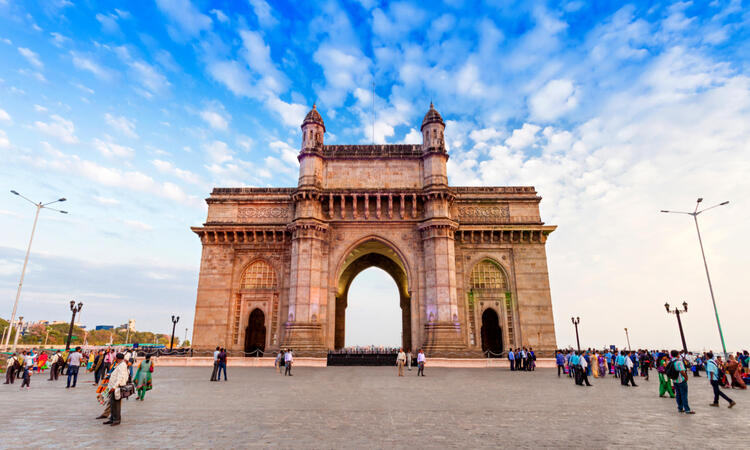
(Image Credit: Planet of Hotels)
Initially, the Gateway was a symbolic ceremonial entrance to India for important colonial dignitaries. It also holds historical significance as it marks the location where the last British troops departed India in 1948 following Indian independence. The monument is on the waterfront, overlooking the Arabian Sea at an angle opposite the Taj Mahal Palace and Tower Hotel.
Chhatrapati Shivaji Terminus, Mumbai
Chhatrapati Shivaji Terminus, officially known as Chhatrapati Shivaji Maharaj Terminus is a historic railway terminus and UNESCO World Heritage Site located in Mumbai, Maharashtra, India.
The terminus was designed by Frederick William Stevens, a British-born architectural engineer, based on an initial design by Axel Haig. It was constructed in the exuberant Italian Gothic style. The building work commenced in 1878 on a site south of the old Bori Bunder railway station, and it was completed in 1887, coinciding with the 50th anniversary of Queen Victoria's reign.
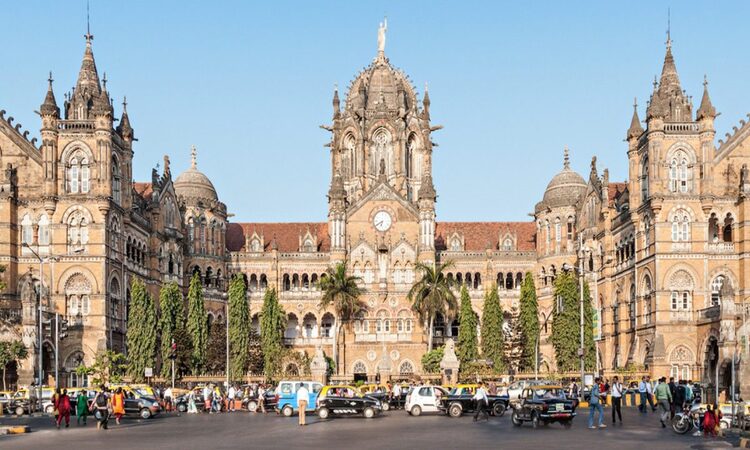
(Image Credit: Housing)
In March 1996, the station's name was changed from Victoria Terminus to "Chhatrapati Shivaji Terminus" (with the station code CST), in honour of Shivaji, the 17th-century warrior king and the first Chhatrapati (emperor) of the Maratha Empire. In 2017, the station was once again renamed "Chhatrapati Shivaji Maharaj Terminus" (with the code CSMT).
This serves as the headquarters of India's Central Railway and is one of the busiest railway stations in the country. It serves as a terminal for both long-distance and suburban trains, with 18 platforms.
Getting Here
- 12952 | MMCT TEJAS RAJ - Delhi (NDLS) To Mumbai (MMCT)
- 18030 | SHM LTT EXPRESS - Kolkata (SHM) To Mumbai (LTT)
- 12702 | HUSSAIN SAGAR - Hyderabad (SC) To Mumbai (DR)
- 22222 | CSMT RAJDHANI - Delhi (NZM) To Mumbai (CSMT)
- 12262 | CSMT DURONTO EX - Howrah (HWH) To Mumbai (CSMT)
Conclusion
Memorials in India stand as a testament to the nation's rich history, vibrant culture, and the remarkable individuals who have left a lasting mark on the country's identity. Each memorial carries a unique story, inviting visitors to immerse themselves in the grandeur of the past.
As we explore these architectural marvels, we connect with the spirit of India and gain a deeper appreciation for the enduring legacies that continue to shape the nation. Let us cherish and preserve these memorials as precious treasures, ensuring that their stories are passed on to future generations.

